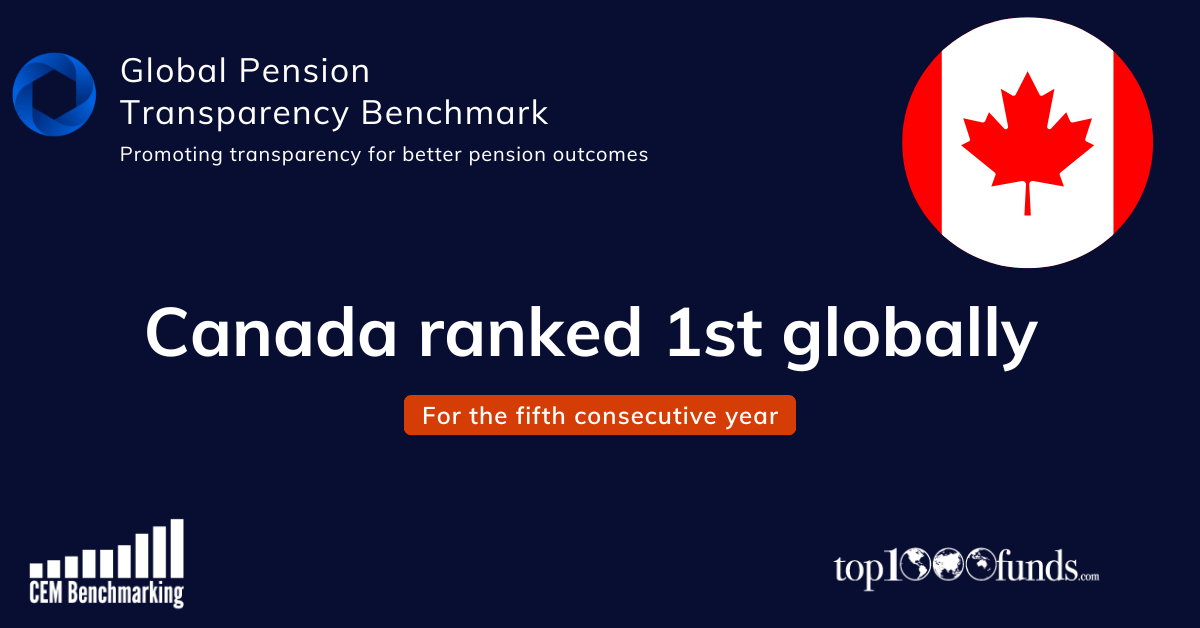Canada has been named the country with the most transparent pension funds for the fifth consecutive year, according to the 2025 Global Pension Transparency Benchmark, with each of the five Canadian funds assessed ranked in the top 15 funds globally.
The results reaffirmed the strengths of the Canadian model, known for its sound governance, clear investment mandates and well-run in-house capabilities. The Canada country ranking was eight points ahead of the two countries in second place, Australia and the Netherlands, which had an overall transparency score of 92.
The GPTB assesses the largest five funds in 15 countries and in Canada that was CPP Investments, CDPQ, BCI, OTPP and PSP. The overall transparency score is based on the measure of four factors – three of which Canada led the way. It displayed the best-in-class governance, performance and responsible investing disclosure practices, but lost out to the Netherlands in cost disclosures.
In large part the leadership displayed by Dutch pension funds in cost reporting is due to regulation. Dutch funds are legally required to report on their costs under a prescribed method – through the Financial Assessment Framework – to the regulator De Nederlandsche Bank.
CEM Benchmarking product manager Edsart Heuberger, who is research lead for the GPTB, says Canada’s leadership position is partly driven by a healthy dose of peer competition.
“With a region like Canada, there’s always been a bit of an effect of thinking ‘what’s CPP doing? If CPP is doing it, we better do too’,” he says.
“The Maple 8 funds pride themselves on great governance and great transparency. They’re all big. They’re all wanting to be leaders and competitive with one another. They want to say this is who we are, and this is what we have to be – that’s why I think they’re leaders in all but one category in the four factors.”
Europe showed strength in transparency as a region, with half of the top 10 most transparent countries belonging to the continent.
Heuberger notes that some nations don’t have a prevailing culture of transparency which is manifested in the ranking, such as Latin America and Japan (despite its massive pension assets).
“In countries like Mexico and Chile, which are the two Latin American countries in our benchmark, and to a lesser extent Brazil, we just don’t see a lot of progress,” he says. “Even though this [transparency benchmark] has been in the public domain for five years, there hasn’t been much impetus for change, that we’ve heard or seen.”
“Likewise, some of the Japanese pension funds didn’t seem to have lot of movement. Maybe that’s just reflective of that [reserved] Japanese business culture,” he says, noting that the $1.9 trillion Government Pension Investment Fund (GPIF) only ranked 32 in the overall benchmark.
“Another aspect is there are some highly regulated markets … like Australia and the Netherlands, and the UK, and you do see those markets do well.”
A joint initiative between Top1000funds.com and CEM Benchmarking, the 2025 edition of the GPTB marks the final instalment of a five-year project which was established to showcase and encourage best practice in the industry and provide a self-improvement framework for fiduciary investors.
Among all 75 funds assessed, 61 per cent improved their score (compared to 72 per cent last year) and 15 per cent had worse scores.
All 15 countries represented in 2025 fared better than five years ago when the GPTB released its first edition. The countries that have improved transparency the most over the five-year period are Australia (20 points), Canada (18 points) and the United States (16 points).


